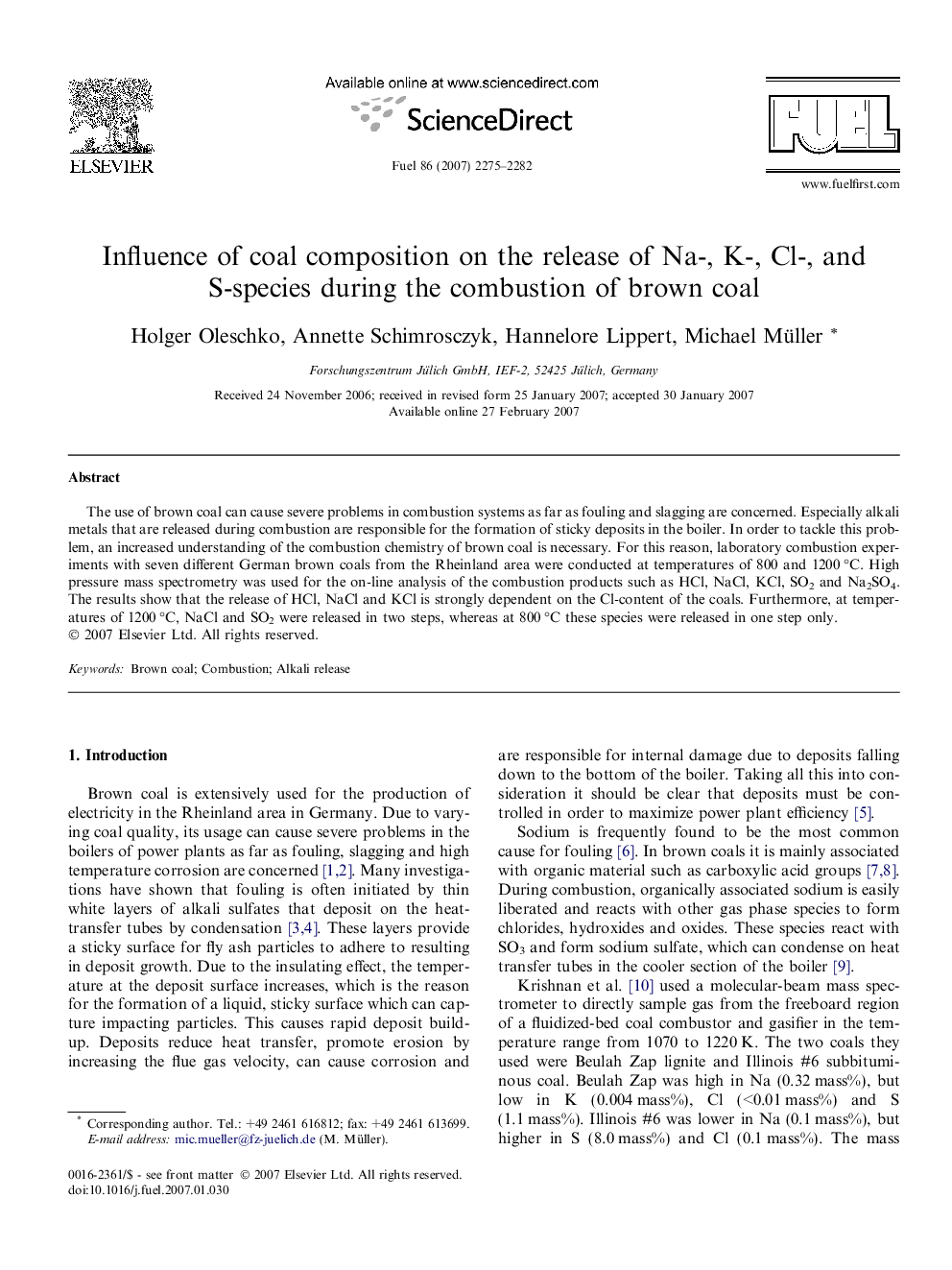| Article ID | Journal | Published Year | Pages | File Type |
|---|---|---|---|---|
| 208193 | Fuel | 2007 | 8 Pages |
The use of brown coal can cause severe problems in combustion systems as far as fouling and slagging are concerned. Especially alkali metals that are released during combustion are responsible for the formation of sticky deposits in the boiler. In order to tackle this problem, an increased understanding of the combustion chemistry of brown coal is necessary. For this reason, laboratory combustion experiments with seven different German brown coals from the Rheinland area were conducted at temperatures of 800 and 1200 °C. High pressure mass spectrometry was used for the on-line analysis of the combustion products such as HCl, NaCl, KCl, SO2 and Na2SO4. The results show that the release of HCl, NaCl and KCl is strongly dependent on the Cl-content of the coals. Furthermore, at temperatures of 1200 °C, NaCl and SO2 were released in two steps, whereas at 800 °C these species were released in one step only.
